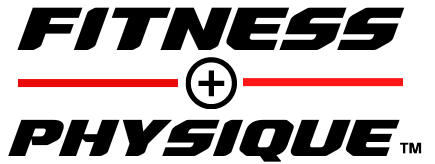What You Eat Matters as Much as How Much
There’s an obsession with counting calories and checking serving sizes that has been driving us all insane. And instead of helping us lose weight, and help us become fitter and leaner, it has pushed us closer and closer to the brink of an epidemic which is known in the medical world as obesity.
Young and old, obesity has infiltrated our lives in one way or another; affecting us personally or a loved one. And it isn’t just about the numbers popping up on the scale. Obesity increases your risk of heart disease, diabetes, osteoporosis, arthritis, and many other types of chronic illnesses.
Serving vs. Portion 
Let’s start by differentiating between serving, or serving size, and portion.
A serving is what can be found on a food product’s food label, or Nutrition Facts, on the side of the package. It’s a suggestion of how much you should eat of that particular food product. Each product has different serving sizes and uses various measurements, such as cups, grams, ounces, slices, or pieces. There’s also a servings per container on the label which gives you an idea of how many servings are there in the entire package. A portion is the amount of food you eat per meal. It could be directly from the box, or how much food is on your plate at home or at a restaurant. More often than not, the portion of food you decide to consume won’t match the serving size provided for you on the food label.
How much?
Knowing what to eat is easy. We all know what’s good for you and what’s not; what we should eat 80% of the time and what we can indulge in 20% of the time without feeling any guilt. The problem now, however, has become not what to eat, but how much should I eat? Even healthy foods should be eaten in moderation.
How much food we can consume at each meal is different from one person to the next based on age, gender, weight, metabolism and how active that person is. If you work out regularly, you’ll need more calories than someone who leads a more sedentary lifestyle. Or if you’re in your twenties, your metabolism will be working faster than someone in their fifties, which means you can eat larger portions without worrying all that much.
Here are a few tips to help you quickly figure out your portion sizes both at home or on the go:
• Use smaller dishes. It may sound simple, but you’ll be amazed at how easily your brain accepts that you’re eating less. And you won’t even feel you’re doing it.
• Use your plate as a measuring tool. For example, if you’re eating salad, that should take up ½ your plate. Protein and complex carbs should take about a quarter of your plate. And if you’re eating foods high in fats, that should only be ½ a tablespoon.
• Use your hands. It’s not an exact science, but the size of your hands usually corresponds to the size of your body. So, protein should be roughly the size of 1 palm for women and 2 palms for men; vegetables and foods rich in carbs should be about a fistful for women and 2 fistfuls for men; high-fat foods should be about the size of a thumb for women and 2 thumbs for men.
• Avoid eating straight from the container. Measure out the serving size in a bowl instead.
• Always start each meal with a glass of water.
• Avoid eating while standing up or while you’re being distracted by something, as a phone call or the TV
• Always focus on how your food looks, smells, tastes as you purposefully chew each bite. Practicing mindfulness will help you reevaluate your relationship with food. It will also help you feel full quicker, and most importantly, satiated and content.
The bottom line is that it’s important to have a healthy relationship with food. Just like in any relationship, neither side should have the upper hand. There should be a sense of balance and respect without that negative hold that food can sometimes have on you.
Be sure to check out our website, FatToFitBody® for all our articles. And don’t forget to become a member to access all our workout videos, Ebooks, and online coaches by CLICKING HERE!

 Previous Post
Previous Post